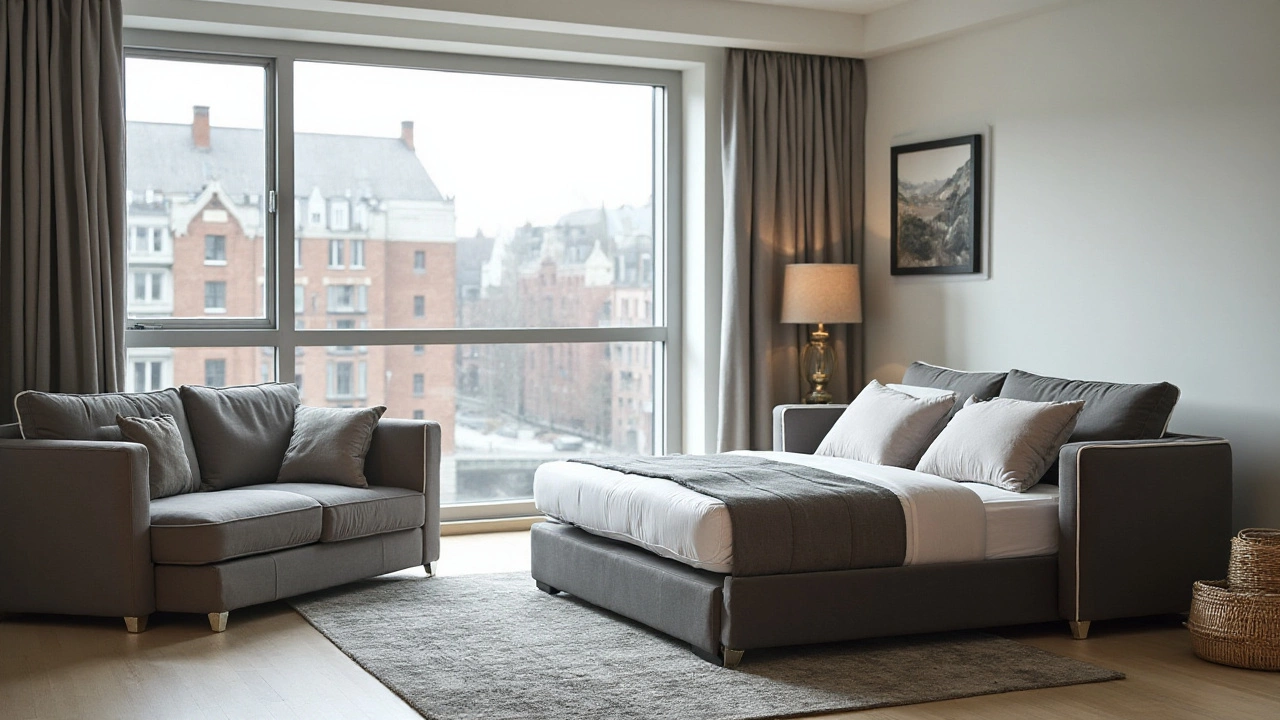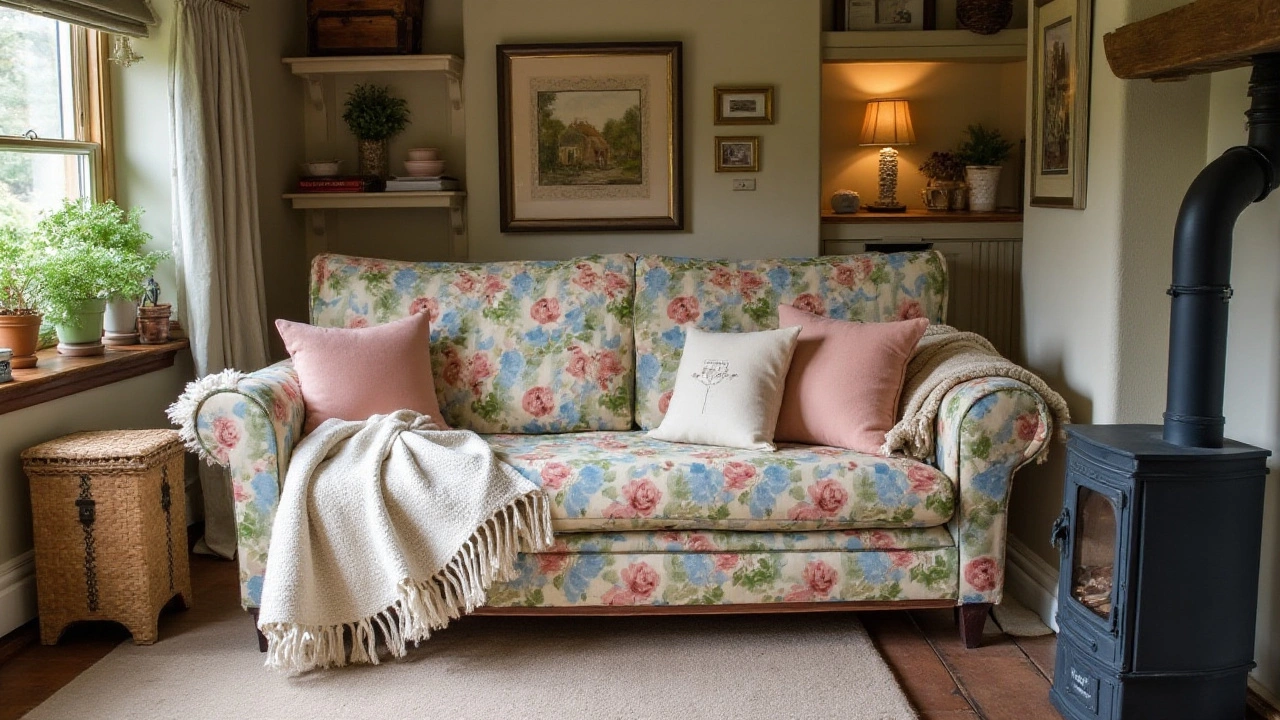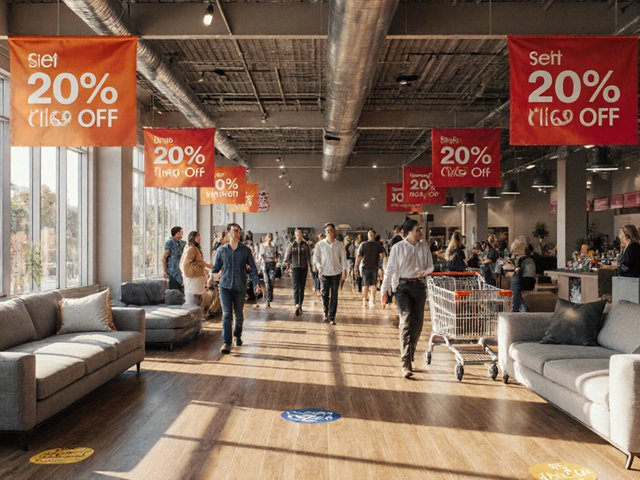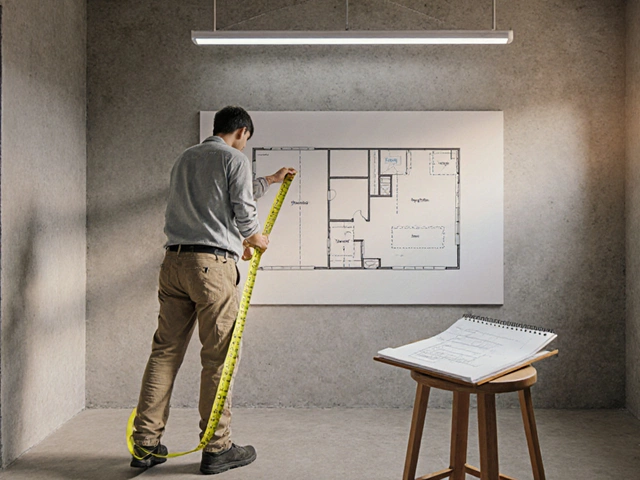Sleeper sofas and sofa beds, while both invaluable in their multifunctionality, are distinct entities within the realm of convertible furniture. Each serves a dual purpose, offering the convenience of seating by day and transforming into a sleeping space by night. But what truly sets them apart? For the untrained eye, the differences may seem negligible, yet a deeper exploration reveals unique characteristics and advantages.
Recognizing the nuances between a sleeper sofa and a sofa bed can be the key to making a gratifying furniture purchase. Whether you're aiming for comfort, style, or practicality, knowing these differences is paramount. The challenge often lies in aligning your selection with personal taste and practical needs, ensuring a seamless integration into your living space.
Join us as we delve into the fascinating world of sleeper sofas and sofa beds. Discover what each offers in terms of design, comfort, and even upkeep, so you can rest easy knowing you've made the best choice for your home.
- Understanding Sleeper Sofas
- Exploring Sofa Beds
- Key Differences in Design
- Comfort and Practicality
- Tips for Choosing the Right One
- Maintenance and Care
Understanding Sleeper Sofas
When it comes to versatile furniture, a sleeper sofa is one of those cleverly designed pieces that effectively blend functionality with style. Often seen as the cornerstone of convertible furniture, sleeper sofas come equipped with a hidden bed frame nestled inside their couch-like exterior. This allows them to seamlessly transform a living room into a guest bedroom with just a few simple motions. For those with limited space, they present a practical solution to the age-old problem of accommodating overnight guests without the need for a dedicated guest room.
Due to their versatile nature, sleeper sofas are popular in urban apartments and small homes where maximizing space is essential. The mechanism of a sleeper sofa is typically straightforward – a thick mattress is folded inside a couch and can be pulled out quite easily. Some higher-end models even offer memory foam mattresses that add an extra layer of comfort, rivaling traditional beds. The diversity of styles and materials available mean that they don’t have to sacrifice aesthetics for utility. From classic leather to contemporary fabrics, a sleeper sofa can be tailored to fit any decor.
Many furniture experts argue that the demand for sleeper sofas is increasing as more people appreciate multipurpose home items. According to Joshua Siegel, a furniture designer, "A sleeper sofa isn’t just about providing space for guests; it's a statement piece that reflects the flexibility and adaptability of modern lifestyles."
A sleeper sofa isn’t just about providing space for guests; it’s a statement piece that reflects the flexibility and adaptability of modern lifestyles. – Joshua Siegel
One of the key features of sleeper sofas that tend to attract buyers is their ease of use. They typically include mechanisms that are designed to make transformation from sofa to bed as smooth as possible – though the ease can vary considerably between models. Some use a pull-out method where the mattress is folded beneath the seat cushions, while others employ a fold-down backrest that offers a flatter sleeping surface. In recent years, advancements in design have led to mechanisms that are not only more efficient but also sturdier, ensuring the sleeper sofa remains an investment for years to come.
Sleeping on a Sleeper Sofa: Comfort and Considerations
Getting a good night’s sleep on a sleeper sofa is highly possible, especially if you choose models that prioritize both seating and sleeping ergonomics. The most comfortable options will offer mattresses made from supportive materials, such as high-density foam or even coil-spring constructions. However, practical tips suggest testing the bed before purchasing. Lay it out flat in the showroom if possible, spending a few moments to assess how it feels against your body. Given that mattress thickness can impact comfort, it's ideal to look for mattresses that are at least 4 to 5 inches thick.Those considering a sleeper sofa should also think about the weight and size when extended. In compact apartments, one must ensure that there is enough space available to unfold the bed without blocking high-traffic areas. After all, convenience during the day shouldn't mean compromise at night. Different sizes are available, ranging from twin to queen, accommodating various needs depending on the size of the room and anticipated guest volume.
Exploring Sofa Beds
When it comes to achieving a harmonious blend of style and functionality in modern homes, sofa beds emerge as a compelling choice. Seamlessly transforming from a chic seating area to a cozy sleeping space, they have become a staple in spaces where versatility is key. The charm of a sofa bed lies in its simplicity and efficiency. Essentially, a sofa bed comprises a mattress crafted into the sofa’s frame as a single unit, which unfolds into a bed. This design makes it an excellent solution for impromptu sleepovers or small apartments lacking a dedicated guest room.
Historically, the concept of sofa beds traces its origins back to when living spaces were multifunctional by necessity. Their popularity surged in the early to mid-20th century, aligning with urbanization trends and the ensuing demand for multipurpose furniture. From modest beginnings, sofa beds have evolved into stylish pieces that offer both comfort and aesthetic appeal. Their contemporary iterations often boast memory foam mattresses or luxurious upholstery, catering to a wide range of comfort preferences and interior décor styles.
A notable benefit of sofa beds is their easy transformation process. Unlike a sleeper sofa, which may require maneuvering of cushions and hidden mechanisms, a sofa bed typically involves a simple pullout or fold-down action. This ease of use is a significant factor for many when choosing between the two. However, it's essential to recognize that while some sofa beds offer excellent seating comfort, the sleeping experience can vary. Investing in models with high-quality mattresses can mitigate potential discomfort and ensure a restful sleep akin to a traditional bed.
Another appealing aspect of sofa beds is their ability to enhance room aesthetics without altering the core functionality of a space. With diverse designs and material options available, they can fit seamlessly into any décor, from opulent velvet options to minimalist leather ones. Their customization potential enables individuals to express personal style without forgoing utility, making them a favorite among interior designers.
Interestingly, studies suggest that the demand for multifunctional furniture like sofa beds is set to increase, driven by a rise in small-space living and a growing appreciation for minimalist design principles. A survey by the National Sleep Foundation highlighted that many households prefer owning a sofa bed precisely due to its space-saving benefits and ability to quickly accommodate guests. To maximize durability and comfort, regular maintenance, such as rotating the mattress or spot-cleaning upholstery, can markedly prolong its lifespan.
In the battle of functionality, sofa beds stand strong, offering a blend of innovation, style, and pragmatism. For those living in compact urban dwellings or those often entertaining guests, the sofa bed represents a shrewd investment, providing a dual benefit that doesn't compromise on quality or design.

Key Differences in Design
The design architecture of a sleeper sofa vastly contrasts with that of a sofa bed, each crafted with distinct purposes and functionalities in mind. A sleeper sofa usually resembles a typical couch, with the added feature of a hidden mattress bed. Its construction involves a foldable bed frame ingeniously nestled within the depths of its couch form, waiting to be unveiled. This design allows sleeper sofas to maintain the aesthetic integrity of your living room, while offering the luxury of quick transformation during nighttime.
On the flip side, a sofa bed often abandons the traditional trappings of intricate mattress stowage. Instead, it seamlessly morphs from a plush seating surface to a flat, bed-like structure. The entire seat and backrest of the sofa bed unfold to lay flush, usually eliminating the need for a separate mattress. This results in a more straightforward and quicker transition process, ideal for those needing frequent change. Both types demand a consideration of their physical mechanisms and how they fit your space's layout and intended use.
Constructive differences extend to the spatial aspects, where sleeper sofas tend to outweigh sofa beds in their real estate needs. The typical sleeper sofa requires ample room to extend the hidden mattress outwards, making size a crucial factor for coziness and maneuverability. In contrast, sofa beds boast a more compact design, showcasing a minimalist approach that barely eats into additional space, perfect for smaller apartments or cramped rooms.
Sleeper sofas are an excellent choice for aesthetics thanks to their resemblance to standard sofas. The abundance of styles and fabric choices ensures they don't compromise your interior design. Conversely, sofa beds commonly adopt more utility-friendly materials, highlighting function over form. Many modern innovations see manufacturers bridging this aesthetic gap, yet the traditional distinction between the polished look of sleeper sofas and the utilitarian nature of sofa beds persists.
"Design is not just what it looks like and feels like. Design is how it works," said Steve Jobs, and nowhere is this more apparent than in the dynamic contrast of sleeper sofas and sofa beds.
Costs can also sway significantly between these designs. Sleeper sofas often bear a higher price point reflective of their complex internal mechanisms and luxurious appeal. Sofa beds, while simpler and potentially more affordable, offer fewer lavish features but compensate with practicality and ease. This financial variation speaks volumes about both short-term usage and long-term investment, serving as a vital consideration for buyers.
Lastly, the operational mechanics of these designs speak to different user experiences. A sleeper sofa's heavy-duty frame demands a bit more effort to extract and retract, ideal for occasional, well-planned guest stays. In juxtaposition, a sofa bed thrives on spontaneous adaptability, ready to fold out instantly at a gentle pull or push. Understanding these visual and mechanical differences aids in aligning your needs with the perfect choice, ensuring both guests and hosts remain contented.
Comfort and Practicality
When it comes to integrating a sleeper sofa or a sofa bed into your living space, comfort and practicality are often the deciding factors for many homeowners. The twin functions of these pieces transform the dynamics of home design, offering a solution that supports both social gatherings and restful nights. Comfort is an undeniable priority; after all, the primary purpose of any sofa or bed is to support relaxation. Mattress type matters greatly here; sleeper sofas typically come with a foldable mattress tucked inside, which is unveiled when needed. These mattresses can be thin and vary in materials, including memory foam, innerspring, or hybrid versions, impacting the comfort level significantly. Users may find the transition from sofa to bed isn't as smooth as desired, as the quality of the mattress often dictates the experience more than the frame itself.
In contrast, a sofa bed transforms from seating to sleeping surface without an internal mattress, which often means a more seamless transition. The couch cushions become part of the sleeping surface, which could potentially save space and effort. However, comfort here can hinge on the quality and plushness of those cushions. How well a sofa bed performs its dual role can also depend on how often it is used, with frequent transitions possibly affecting longevity.
"Designing for comfort is balancing aesthetics and usability to ensure your furniture doesn't just complement your living space but actively enhances it," states renowned interior designer, Abigail Ahern.
Practicality also takes center stage when considering how space is utilized. Sleeper sofas often require space clearance when unfolding, making them suitable for rooms with ample area. In contrast, sofa beds can be a more convenient choice for tighter spaces, given their usually simpler conversion process. Practicality doesn't end at floor space; maintenance and ease of use are equally important. Regular cleaning can become necessary due to dual usage, and ease of conversion plays a role too. No one wants to wrestle with a stubborn mechanism when transforming a space for guests, so ease of use becomes a noteworthy part of the practical evaluation.
A deeper consideration of these factors accentuates how the right choice between a sleeper sofa and a sofa bed hinges on individual needs, from nightly use to sporadic guest accommodation. Knowing what to prioritize—comfort in terms of the mattress or practicality in the manner of space usage and conversion ease—clarifies the decision-making process for every potential buyer. In embracing these elements, one can ensure that their choice serves more than just the functional needs, but also enhances their home atmosphere, lending itself to become an indispensable piece of household equipment.

Tips for Choosing the Right One
When it comes to picking between a sleeper sofa and a sofa bed, the decision is not just about aesthetics—it’s about understanding your space, your lifestyle, and the specific needs of those who’ll be using it. Both have their merits, but making the right choice requires a thoughtful approach. Begin with assessing the dimensions of your room. Measure the space you wish to place this multi-functional piece of furniture. Space planning is crucial as you will need to consider both the couch setup and its extended form. Make sure there's adequate room for comfortable movement even when the bed is unfolded.
Comfort is another key aspect to consider. While sofa beds typically fold out flat like a futon, which might not be the best in terms of mattress thickness, sleeper sofas often contain a pull-out mattress that can be more akin to what you'd expect from a traditional bed. Test out the options if possible; many stores offer showrooms where you can try before you buy. This can help you gauge not just the seating comfort but also the sleep experience. Don’t forget to think about who will be using the bed—children, adults, or occasional guests—and choose accordingly.
Style and fabric choices are other considerations that can dramatically influence your decision. A sleeper sofa tends to offer a wider range of customization with upholstery and design options. You can opt for a sleek modern look or go traditional with more plush and detailed designs. Remember to choose fabrics not just based on look but also on durability and ease of cleaning, especially if kids or pets are regular users. Fabric technology has advanced significantly, with synthetic options like microfiber offering resistance to stains and wear.
Budget restraints often play a decisive role. While investing in either option is inherently cost-effective given their dual functionalities, prices can vary significantly based on size, brand, materials, and unique features. Investing a bit more upfront might save you on maintenance costs long-term.
Furniture Today magazine suggests, "Quality in a sleeper sofa or sofa bed can assure years of dependable service and a restful night's sleep for your guests."Look for warranties offered by manufacturers, which can be quite revealing about the expected lifespan of the product. Some might provide only a minimal cover for fabric, while others could offer extensive coverage for the structural and mechanical aspects.
If you are someone who frequently hosts guests, a sleeper sofa with a high-quality mattress might be the most compatible option for you. However, simplicity and minimalism, often characterized by a sofa bed, could better suit tight spaces or those living a more nomadic lifestyle, like city dwellers. Never underestimate the power of reputation. Research reviews and ratings, remember, direct feedback from users can give you unfiltered insights into the most common problems or advantages a specific model might have. Sleeper sofas and sofa beds serve a unique purpose in modern homes—choosing right can elevate both functionality and comfort, ensuring your guests always feel welcomed and your living space stays versatile.
Maintenance and Care
Maintaining your sleeper sofa or sofa bed goes beyond the occasional dust-off with a microfiber cloth. It involves a commitment to keeping both the fabric and mechanical elements in top-notch condition, ensuring longevity and sustained comfort. Whether you choose a sleeper sofa with a hidden mattress or a sofa bed that flips out, each type requires a slightly different approach to care, though some basic principles apply universally. Start with regular vacuuming to remove dust and debris that not only mars the fabric but can also wear down stitching over time. For deeper cleaning, always follow the manufacturer’s instructions to avoid voiding any warranties or causing damage. For instance, spot-cleaning may be needed for specific stains, and it's always a good idea to test any cleaning products on a hidden area first to ensure they won't discolor the fabric.
Equally crucial is the attention to the internal mechanics, particularly in sleeper sofas that boast intricate pull-out systems. Lubricating metal parts with an appropriate lubricant can extend the life of the folding mechanism and make it easier to operate. An often overlooked aspect is checking screws and bolts periodically to prevent any loosening, which might affect stability and safety. Keeping these components in check minimizes wear-and-tear risks and helps maintain smooth functionality. A simple yet effective habit is to unfold the sofa bed occasionally even if it's not being used. This keeps the mechanism from stiffening and ensures everything remains in working order.
Choosing the right fabric also plays a critical role in how easy your sleeper sofa or sofa bed is to maintain. Microfiber, for instance, is known for its resistance to spills and dirt, making it a popular choice for households with kids or pets. Leather, while luxurious, demands regular conditioning to prevent drying and cracking. A periodic check for hidden damage or signs of wear beneath the cushions can save you from surprise repairs down the line. Some modern models come with removable and washable covers, offering a straightforward cleaning solution for busy homes. That's not just practical but also a breath of fresh air when you want to change up your room's look without investing in new furniture.
“Proper maintenance not only extends the life of your furniture but also retains its beauty and comfort,” suggests Sophia R. Myers, an expert in home furnishings care.
While cleanliness is paramount, never underestimate the power of strategic placement. Keep your convertible couch away from direct sunlight to prevent fading and away from extreme heat sources that could accelerate fabric deterioration. Rotating the cushions occasionally allows for even wear, reducing the risk of lumps and sags. If you routinely use, say, the left side of your sleeper sofa, flipping and rotating can distribute the wear more evenly across the piece. Little steps such as these preserve the structure and extend the life of your furniture.
Finally, even with all the regular care, professional deep cleaning once a year can revitalize your sofa bed or sleeper sofa, especially for high-traffic pieces. These services typically offer a more thorough clean than what you could accomplish at home, reaching deep into the layers of your couch to ensure every inch is refreshed. Given the investment a quality convertible sofa represents, treating it to some professional TLC now and then is a wise choice, ensuring it continues to serve as a reliable centerpiece in your home for years. Embedded in these simple routines lies the secret not just to extending the lifespan of your furniture, but also to mastering the art of practical and stylish living.





